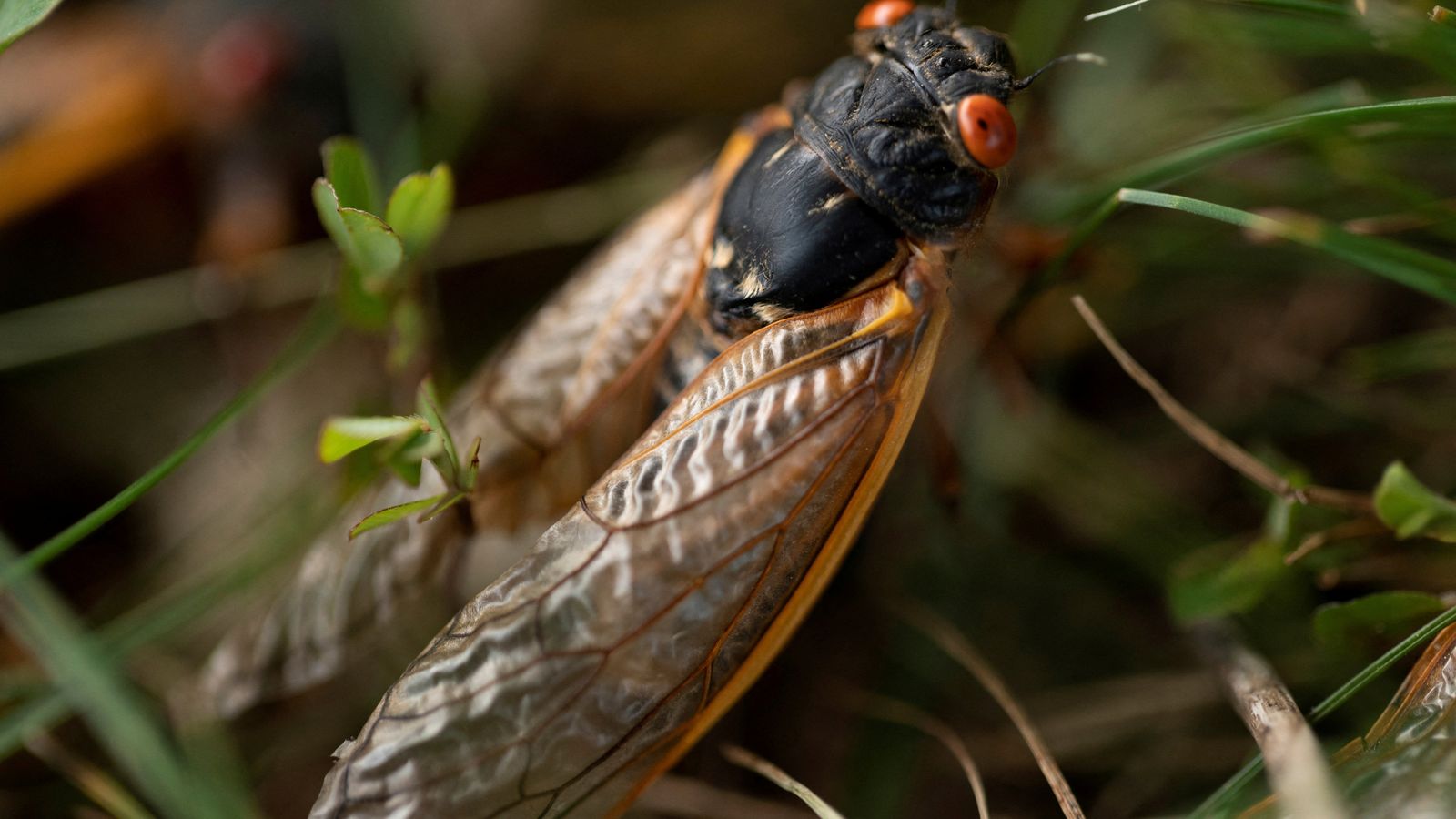Trillions of cicadas are about to emerge in parts of the US in numbers not seen in decades and possibly centuries.
People in the southeast of the US are set for a “sight to behold”, experts say, as periodical cicadas – which usually surface every 13 years – will emerge coinciding with another brood which come out in a 17-year cycle this spring.
While annual cicadas, which are bigger and greener than their black-bodied cousins, can be found anywhere in the world, periodical bugs, which are black in colour and have red, bulging eyes, can only be found in North America.
The dual emergence of the periodical cicadas, who are infamous for how loud they can be, is a rare phenomenon and is estimated to have last happened 221 years ago in 1803, when Thomas Jefferson, one of America’s founding fathers, was US president.
University of Connecticut cicada expert John Cooley called the upcoming duel invasion “cicada-geddon”.
At times mistaken for locusts, the bugs’ buzzing can reach a volume of 110 decibels.
“Periodic cicadas don’t do subtle,” Mr Cooley said.
Shares in Donald Trump’s Truth Social platform plunge after major losses revealed
Vontae Davis: Former NFL player found dead at Florida mansion aged 35
Baltimore bridge collpase: Temporary channel for ships opened to aid clean-up operation after disaster
There are already clear signs of the upcoming occupation by Brood XIXs – the cicadas that emerge on a 13-year cycle – as they have been forming boreholes in the red clay of Georgia.
As the species with the largest geographic distribution, the XIX population is spread through the Midwest, including Iowa, Illinois and Indiana, as well as in the southeast, in smaller sections of Alabama, Arkansas, Georgia, Kentucky, Louisiana, Missouri, Mississippi, North Carolina, Oklahoma, South Carolina, Tennessee, Virginia, and Maryland, according to National Geographic.
Soon after their emergence, cicadas from a different population, Brood XIII, will surface in Illinois.
The XIII population only comes out every 17 years and, according to University of Maryland entomologist Mike Raupp, is “historically abundant”.
The broods’ cycles emerging at the same time is a rare event which will result in more cicadas “than anywhere else any other time”, University of Maryland entomologist Paula Shrewsbury said.
Be the first to get Breaking News
Install the Sky News app for free
Georgia Tech biophysicist Saad Bhamla said: “We’ve got trillions of these amazing living organisms come out of the earth, climb up on trees and it’s just a unique experience, a sight to behold.
“It’s like an entire alien species living underneath our feet and then some prime number years they come out to say hello.”
According to researchers at the University of Connecticut, the cicadas will this year cover so much territory that it will be equal to the size of the US state of Delaware.
Read more on Sky News:
April Fool’s Day round-up
Rarely seen whale rescued after becoming stuck
“If we accept an estimate of a million cicadas per acre and if the total combined area of a periodical cicada emergence is roughly the size of Delaware, then more than a trillion cicadas will be involved,” the research reads.
“For 2024, since cicadas will emerge from Maryland to Oklahoma, Illinois to Alabama, clearly, trillions of adult cicadas will be present – but not all in the same place at the same time.”
Periodical cicadas look for vegetation surrounding mature trees, where they can mate and lay eggs and then go underground to feast on the roots, said Mount St. Joseph University biologist Gene Kritsky, a cicada expert who wrote a book on this year’s dual emergence.











